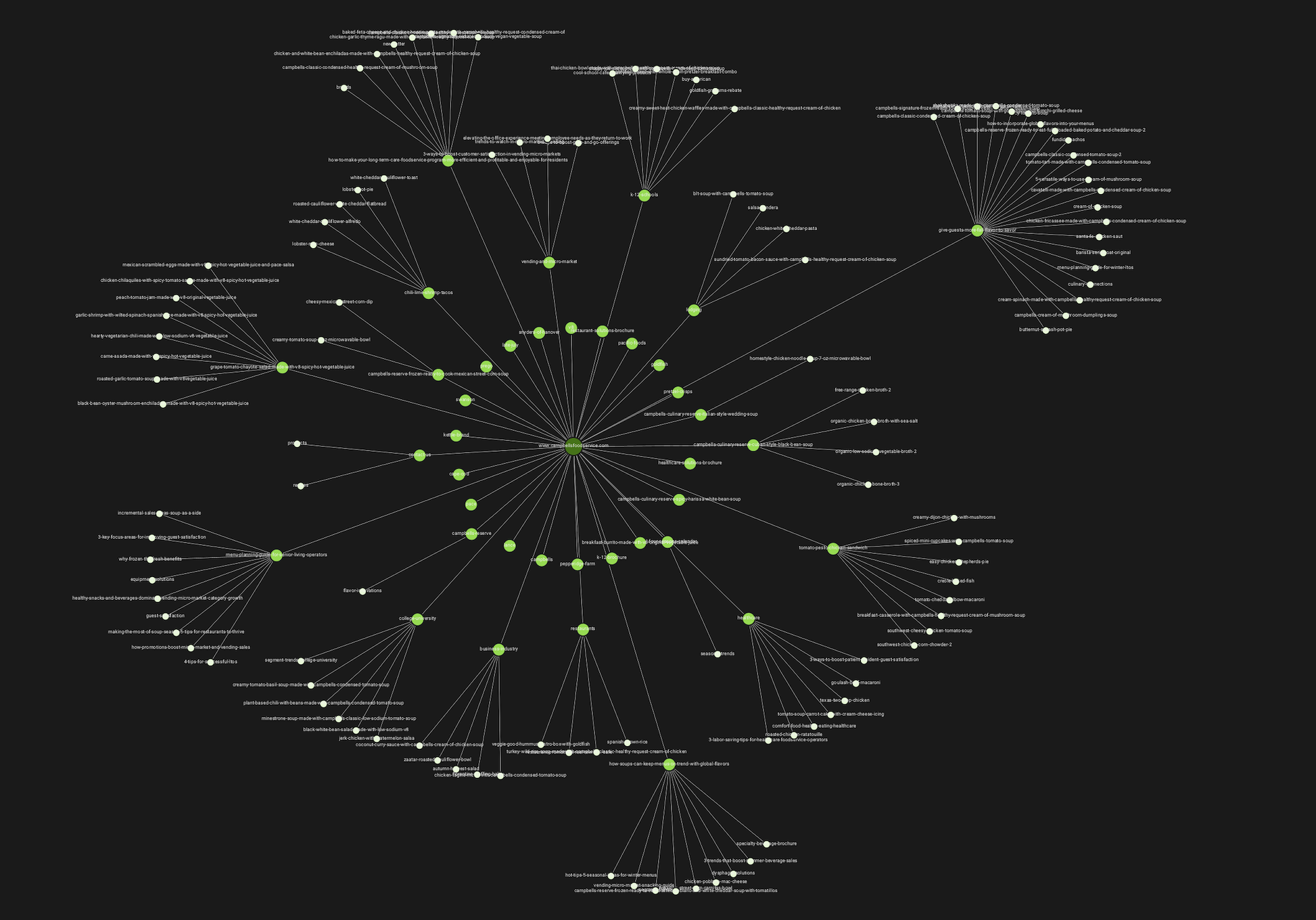Information Architecture and the Internet
Most people think of the internet as websites and apps. Underneath, it’s really an endless exercise in information architecture—how ideas, entities, and relationships are modeled. Every search result, navigation menu, and hyperlink is a manifestation of architecture. The graph view above is a microcosm of that: content nodes, relationships, clusters of meaning.
Graphs, Not Trees
Traditional information design leaned on hierarchies—sites, folders, categories. But the internet is better understood as a graph, where relationships matter more than containers.
- Trees are rigid.
- Graphs allow overlap, recombination, and dynamic clustering.
This flexibility is why "related searches" or "you may also like" feel natural—they surface the edges, not just the parent/child relationships.

Benefits of Graph-Based Views
Why use graph-style information architecture in internet-scale systems?
- Discovery – You don’t just get the thing you asked for, but also the context surrounding it.
- Resilience – Links and clusters can adapt when nodes move or disappear.
- Scalability – Graphs grow organically without collapsing under hierarchy limits.
- Personalization – Paths through the graph can adapt to individual user journeys.
These are the same principles that power search engines, recommendation systems, and knowledge bases.
When to Use Graph Architecture
Not every problem needs a graph. A rigid folder or category structure is often simpler. Graph approaches make sense when:
- Content has multiple valid classifications.
- Relationships are fluid, evolving, or subjective.
- The system is expected to support exploration rather than only retrieval.
- Scale or complexity would overwhelm hierarchical navigation.
In practice: academic research, recipe networks, product ecosystems, or even personal knowledge graphs.
Beyond Representation: Action
Architecture isn’t just about representation—it’s about enabling action. The internet works because we can:
- Search.
- Filter.
- Follow.
- Remix.
Graphs turn into workflows when combined with tools that act on the structure: autocomplete, clustering, summarization, or AI-driven navigation.
The Future of Information Architecture Online
With AI in the loop, the line between information architecture and interaction design blurs.
- Instead of navigating manually, you describe intent.
- Instead of scanning categories, you’re given contextual recommendations.
- Instead of building one taxonomy, systems learn overlapping ones.
The internet becomes less about "where is it stored?" and more about "how do I want to engage with it?"
Closing
Information architecture on the internet is no longer a background concern—it is the user experience. Graph-based models unlock discovery, personalization, and resilience, making them especially relevant in a world where context and relationships matter more than ever.